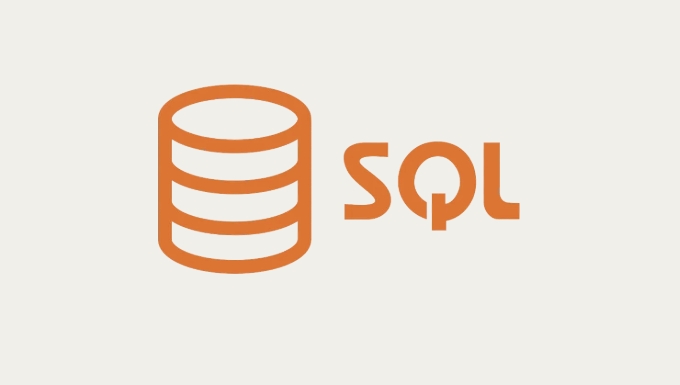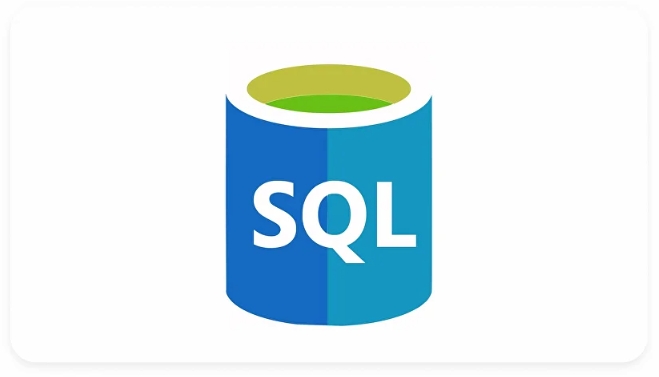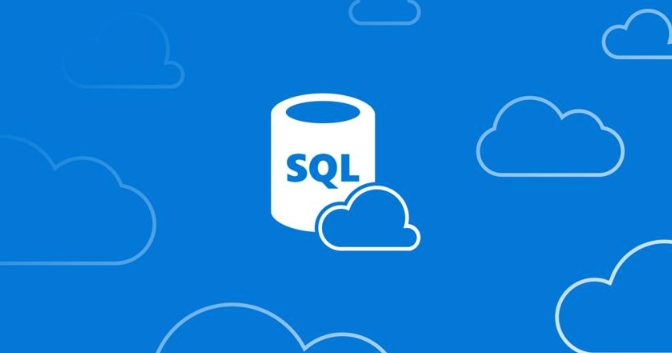There are three ways to connect SQL database to Excel, which are suitable for different user needs. 1. Using Power Query to connect to SQL databases is the most recommended way. After opening Excel, select "From SQL Server" through the "Data" tab, enter server and database information and select authentication method. You can import the entire table or custom SQL query statements, which support timed refresh and data cleaning. 2. Use Microsoft Query directly to suit older users. Select "From Microsoft Query" in the "Data" tab. After creating the data source, you can obtain data through a graphical interface or SQL query. It has simple operation but weak functions. 3. Connecting with ODBC data source is suitable for advanced users. After configuring the system DSN in Windows, Excel imports data through ODBC, which facilitates sharing and unified maintenance of multiple applications. In addition, you need to pay attention to details such as permissions, driver installation, refresh frequency settings and voucher saving to ensure smooth connection and data synchronization.

Connecting SQL databases to Excel is a common need for many office workers and data analysts. If you need to extract data from the database and analyze it in Excel, the whole process is actually not complicated, and you can do it by mastering a few key steps.

1. Connect to SQL database using Power Query
This is the most recommended method at present, especially for scenarios where data needs to be updated regularly.

- Open Excel and click the "Data" tab → "Get Data" → "From Other Sources" → "From SQL Server" (or other database type you use).
- Enter the server name and database name and select the authentication method (Windows authentication or SQL account password authentication).
- If it is the first time you connect, you may need to install some drivers, just follow the prompts.
- After successful connection, you can choose to import the entire table, or you can write SQL query statements to filter data.
- After loading, you can refresh the data source in Excel to keep the data in sync.
The advantage of Power Query is that it supports timed refreshes and can perform preliminary cleaning and conversion of data.
2. Use Microsoft Query directly (suitable for older version users)
If you are using Excel 2016 or earlier, you may be more familiar with this tool.

- Click the "Data" tab → "Get Data" → "From Microsoft Query".
- Create a new data source and select the SQL Server driver.
- Set the DSN name, enter the server address, login information, etc.
- After logging in successfully, you can use the graphical interface to select tables and fields, or write SQL queries directly.
- Finally export to Excel table.
Although this method is not as powerful as Power Query, it is easier for people who are not used to the new interface.
3. Connect using ODBC data source (suitable for advanced users)
ODBC is a common database connection method suitable for users with specific configuration needs.
- Open ODBC Data Source Manager on Windows and add a new system DSN.
- Select SQL Server driver and fill in the server IP, login account and default database.
- Test the connection to make sure it's fine.
- Back to Excel, Data tab → From Other Sources → From ODBC.
- Select the data source you just configured, enter the query statement, and load it into the worksheet.
The ODBC method is suitable for multiple applications to share the same data source, and is also convenient for unified maintenance.
4. Precautions and tips
- Permissions issue : Make sure your database account has read permission, otherwise an error will be reported and it will not be able to connect.
- Driver missing : Sometimes it is prompted that SQL Native Client or ODBC Driver is missing. Just go to Microsoft's official website to download and install the corresponding version.
- Refresh frequency settings : If the data changes frequently, you can set the automatic refresh time interval in Excel.
- Save credentials : In order to refresh the data smoothly next time, remember to check "Remember my credentials" when connecting.
Basically that's it. As long as the database is configured correctly, it is not difficult to connect to SQL in Excel. The key is to choose the right method and pay attention to the details.
The above is the detailed content of How to connect SQL to Excel. For more information, please follow other related articles on the PHP Chinese website!

Hot AI Tools

Undress AI Tool
Undress images for free

Undresser.AI Undress
AI-powered app for creating realistic nude photos

AI Clothes Remover
Online AI tool for removing clothes from photos.

Clothoff.io
AI clothes remover

Video Face Swap
Swap faces in any video effortlessly with our completely free AI face swap tool!

Hot Article

Hot Tools

Notepad++7.3.1
Easy-to-use and free code editor

SublimeText3 Chinese version
Chinese version, very easy to use

Zend Studio 13.0.1
Powerful PHP integrated development environment

Dreamweaver CS6
Visual web development tools

SublimeText3 Mac version
God-level code editing software (SublimeText3)

Hot Topics
 OLTP vs OLAP: What Are the Key Differences and When to Use Which?
Jun 20, 2025 am 12:03 AM
OLTP vs OLAP: What Are the Key Differences and When to Use Which?
Jun 20, 2025 am 12:03 AM
OLTPisusedforreal-timetransactionprocessing,highconcurrency,anddataintegrity,whileOLAPisusedfordataanalysis,reporting,anddecision-making.1)UseOLTPforapplicationslikebankingsystems,e-commerceplatforms,andCRMsystemsthatrequirequickandaccuratetransactio
 How Do You Duplicate a Table's Structure But Not Its Contents?
Jun 19, 2025 am 12:12 AM
How Do You Duplicate a Table's Structure But Not Its Contents?
Jun 19, 2025 am 12:12 AM
Toduplicateatable'sstructurewithoutcopyingitscontentsinSQL,use"CREATETABLEnew_tableLIKEoriginal_table;"forMySQLandPostgreSQL,or"CREATETABLEnew_tableASSELECT*FROMoriginal_tableWHERE1=2;"forOracle.1)Manuallyaddforeignkeyconstraintsp
 What Are the Best Practices for Using Pattern Matching in SQL Queries?
Jun 21, 2025 am 12:17 AM
What Are the Best Practices for Using Pattern Matching in SQL Queries?
Jun 21, 2025 am 12:17 AM
To improve pattern matching techniques in SQL, the following best practices should be followed: 1. Avoid excessive use of wildcards, especially pre-wildcards, in LIKE or ILIKE, to improve query efficiency. 2. Use ILIKE to conduct case-insensitive searches to improve user experience, but pay attention to its performance impact. 3. Avoid using pattern matching when not needed, and give priority to using the = operator for exact matching. 4. Use regular expressions with caution, as they are powerful but may affect performance. 5. Consider indexes, schema specificity, testing and performance analysis, as well as alternative methods such as full-text search. These practices help to find a balance between flexibility and performance, optimizing SQL queries.
 How to use IF/ELSE logic in a SQL SELECT statement?
Jul 02, 2025 am 01:25 AM
How to use IF/ELSE logic in a SQL SELECT statement?
Jul 02, 2025 am 01:25 AM
IF/ELSE logic is mainly implemented in SQL's SELECT statements. 1. The CASEWHEN structure can return different values ??according to the conditions, such as marking Low/Medium/High according to the salary interval; 2. MySQL provides the IF() function for simple choice of two to judge, such as whether the mark meets the bonus qualification; 3. CASE can combine Boolean expressions to process multiple condition combinations, such as judging the "high-salary and young" employee category; overall, CASE is more flexible and suitable for complex logic, while IF is suitable for simplified writing.
 How to get the current date and time in SQL?
Jul 02, 2025 am 01:16 AM
How to get the current date and time in SQL?
Jul 02, 2025 am 01:16 AM
The method of obtaining the current date and time in SQL varies from database system. The common methods are as follows: 1. MySQL and MariaDB use NOW() or CURRENT_TIMESTAMP, which can be used to query, insert and set default values; 2. PostgreSQL uses NOW(), which can also use CURRENT_TIMESTAMP or type conversion to remove time zones; 3. SQLServer uses GETDATE() or SYSDATETIME(), which supports insert and default value settings; 4. Oracle uses SYSDATE or SYSTIMESTAMP, and pay attention to date format conversion. Mastering these functions allows you to flexibly process time correlations in different databases
 What is the purpose of the DISTINCT keyword in a SQL query?
Jul 02, 2025 am 01:25 AM
What is the purpose of the DISTINCT keyword in a SQL query?
Jul 02, 2025 am 01:25 AM
The DISTINCT keyword is used in SQL to remove duplicate rows in query results. Its core function is to ensure that each row of data returned is unique and is suitable for obtaining a list of unique values ??for a single column or multiple columns, such as department, status or name. When using it, please note that DISTINCT acts on the entire row rather than a single column, and when used in combination with multiple columns, it returns a unique combination of all columns. The basic syntax is SELECTDISTINCTcolumn_nameFROMtable_name, which can be applied to single column or multiple column queries. Pay attention to its performance impact when using it, especially on large data sets that require sorting or hashing operations. Common misunderstandings include the mistaken belief that DISTINCT is only used for single columns and abused in scenarios where there is no need to deduplicate D
 How to create a temporary table in SQL?
Jul 02, 2025 am 01:21 AM
How to create a temporary table in SQL?
Jul 02, 2025 am 01:21 AM
Create temporary tables in SQL for storing intermediate result sets. The basic method is to use the CREATETEMPORARYTABLE statement. There are differences in details in different database systems; 1. Basic syntax: Most databases use CREATETEMPORARYTABLEtemp_table (field definition), while SQLServer uses # to represent temporary tables; 2. Generate temporary tables from existing data: structures and data can be copied directly through CREATETEMPORARYTABLEAS or SELECTINTO; 3. Notes include the scope of action is limited to the current session, rename processing mechanism, performance overhead and behavior differences in transactions. At the same time, indexes can be added to temporary tables to optimize
 What is the difference between WHERE and HAVING clauses in SQL?
Jul 03, 2025 am 01:58 AM
What is the difference between WHERE and HAVING clauses in SQL?
Jul 03, 2025 am 01:58 AM
The main difference between WHERE and HAVING is the filtering timing: 1. WHERE filters rows before grouping, acting on the original data, and cannot use the aggregate function; 2. HAVING filters the results after grouping, and acting on the aggregated data, and can use the aggregate function. For example, when using WHERE to screen high-paying employees in the query, then group statistics, and then use HAVING to screen departments with an average salary of more than 60,000, the order of the two cannot be changed. WHERE always executes first to ensure that only rows that meet the conditions participate in the grouping, and HAVING further filters the final output based on the grouping results.






